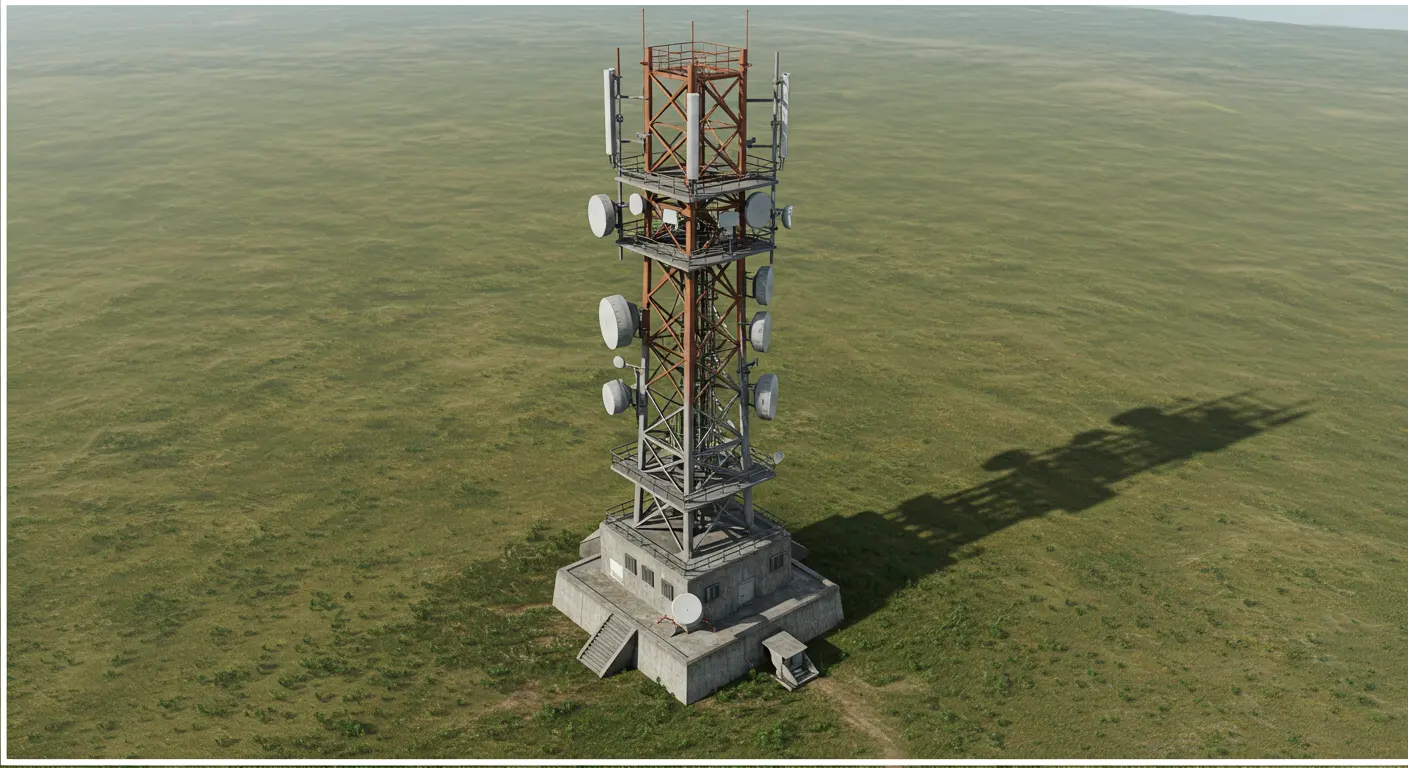Eurocode Telecom Tower Design: Complete Guide to Safety
2025-08-25
A Comprehensive Guide
Telecom tower designing is not merely about setting up just steel structures. It is safety, reliability, and the correspondence with international standards. Eurocode design code of telecom tower has become the benchmark of all design codes in Europe and elsewhere in the world. It gives clear technical guidelines on structural stability, calculation of loads, and safety requirements of telecom towers. This blog will take a deep look into Eurocode telecom tower design. You will understand standards, structural considerations, and practical guidelines for constructing resilient telecom infrastructure that is resilient.
The Importance of Eurocode in Telecom Tower Influence
Eurocode is the common denominator of the European standards in the field of structural design. It guarantees that the telecom tower, transmission towers, and antenna masts are constructed using maximum safety and durability. In the case of telecom infrastructure, Eurocode provides:
- Safety Certainty of standard load combinations
- Homogeneous design practices of the various countries in Europe
- Flexibility of various environmental factors such as wind, snow, and earthquakes.
- Future-ready compliance across expanding 4G, 5G, and beyond.
Important Eurocode Standards on Telecom Towers
When designing telecom towers, several Eurocode parts are applicable. The following are the most critical.
- EN 1990: Basis of structural design- describes the reliability and principles of safety.
- EN 1991: Actions on structures - Roads governing the wind load, the snow load, as well as the temperature effects.
- EN 1993: Design of steel structures- core in steel telecom tower design.
- EN 1993-3-1: Towers, masts and chimneys- specific guidance on telecom structures.
- EN 1998: Seismic design- application in the regions prone to earthquakes.
The standards give fully qualified engineers a complete vision of structural design.
Structural Considerations for Eurocode Telecom Towers Design
The design of the telecommunication tower incorporates numerous technical checks. These areas are all taken into consideration by Eurocode:
1. Wind Load Analysis
- The major force that affects the telecom towers is wind
- Eurocode EN 1991 provides provisions for calculating winds.
- Terrain, ground elevation, Tower, and Antenna surface area should be taken into consideration.
2. Seismic Load Analysis
- In the earthquake areas, the EN 1998 guidelines are enforced.
- The design guarantees that towers will be stable in times of seismic movement.
3. Stability and Fatigue
- Towers are subjected to cyclic loads from wind and the support of antennas.
- Eurocode demands that checking for fatigue be made to prevent premature breakdown.
4. Foundation Design
- The stability of the foundation is of prime importance for tall towers.
- The geotechnical reports and soil bearing capacity are required.
5. Material Selection
- Strong steel is normally utilized.
- EN 1993 provides direction as to steel grades, welding, and corrosion protection.

European Eurocode Telecom Tower Types
Variations of tower types are possible, designed under Eurocode
- Lattice Towers: Lightweight and strong, with common applications in telecom.
- Space-Saving/Modern - Monopole Towers, which save space and are suitable for urban areas.
- Guyed Masts: This is cost-effective in rural areas where there is plenty of land.
There is a design consideration peculiar to each type, but all should conform to the Eurocode safety requirement.
Telecom Towers Eurocode Design Calculations
What are Some of the Fundamental Equations Used?
1. Combination of Loads (EN 1990):
- Dead load - Wind load
- Dead load Dead load + Wind load Dead load + Wind load + Seismic load
- Dead + Wind + Ice load
2. Wind Load Calculation Acc to EN 1991:
- Wind pressure = q = (1/2) x (rho) x (v 2)
- Here, where 0 = density of air, v = velocity of the wind.
3. Checking of Design of Steel (EN 1993):
- In-plane compression, bending, and shear checks.
- Buckling resistance
Such calculations make sure that the tower can survive extreme conditions
Compliance and Safety Facts
The Eurocode provides part safety factors of loads and materials. This provides a correct balance between cost and security. Telecom towers
- Wind load factor: 1.5
- Dead loads- load factor: 1.35
- Material factor of steel: 1.1
- These facilitate the safety of the structure despite any occurrence of unexpected loads.
Benefits of Using Eurocode Telecom Tower Second Design
- International Standardization: The Eurocode is well accepted in the European continent and by international clients, hence used as a fundamental uniformity to quality and dependability of the construction design of telecom towers. This identification facilitates approvals, transnational projects, and cooperation with international multinational teams.
- Consistency: Designers and engineers operate a single system via Eurocode, and this leads to the consistency of calculations, choice of material, and study of structures used. This consistency also reduces errors and discrepancies, and the result of the tower projects is more predictable and reliable.
- Durability: Eurocode puts much emphasis on long-term performance; it takes into consideration fatigue of materials, corrosion, and environmental effects. The result is that towers built by these standards have longer service life, which minimizes maintenance expenses and chances of structural failure in the long run.
- Safety: The standards combine an in-depth consideration of policy issues such as the load of the wind, seismic activity, snow, and operation. Considering these factors, the design of telecom towers makes the tower capable of standing the harsh conditions so that the safety of equipment and people is guaranteed.
- Efficiency: It has optimized design rules that do not over-engineer without jeopardizing safety and durability. This results in the inexpensive construction and the use of resources serving the interests of the manufacturers and operators.
- Flexibility: Eurocode can be adapted to any situation by the use of National Annexes, where climate, soil, and environmental considerations in any region may require changes to suit the local conditions.
Practical Uses of Eurocode in the Telecom world
- 4G and 5G Upgrade: The deployment of new towers would open up the high-speed internet service. Television and radio broadcasting masts.
- Transmission Towers: Integrated power/communication.
- Mobile Networks Growth: Rural and urban integration.
To see more specific applications and real-world projects, see XY Tower case studies.
Conclusion
The Eurocode telecom tower design is the skeleton of safe and secure communication networks. The European standards and design principles contained within Eurocode, such as EN 1990, EN 1991, and EN 1993, allow engineers to structure towers that are resistant to environmental elements and seismic activities in addition to the force of the wind. Eurocode offers a reliable platform of durability, safety, and recognition across the world, whether a tower is a lattice structure or a monopole. To find out more about bespoke telecom tower innovations and Eurocode-compatible engineering, visit XY Tower.

Hey, I’m Chunjian Shu
"X.Y. Tower: Reliable, innovative solutions for high-quality towers and electrical equipment with professional service.
